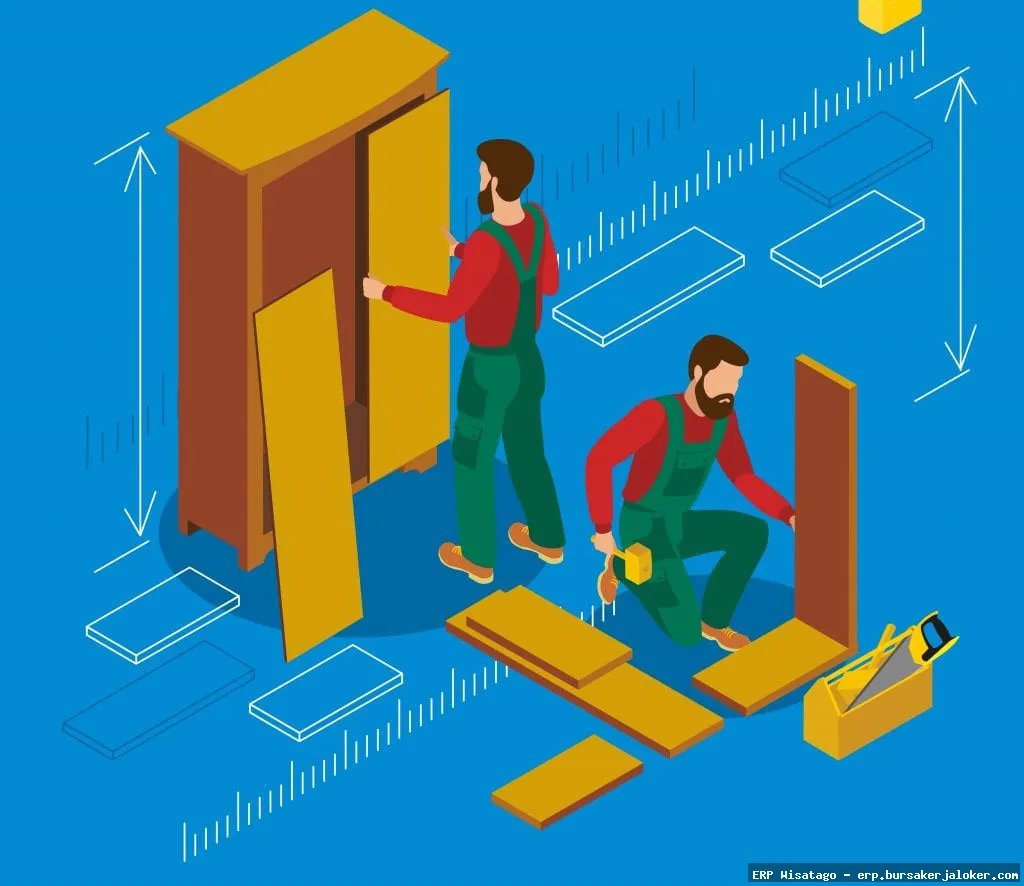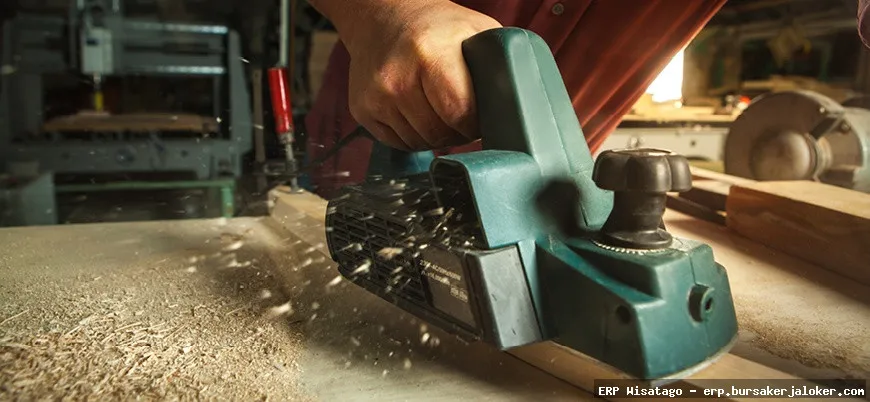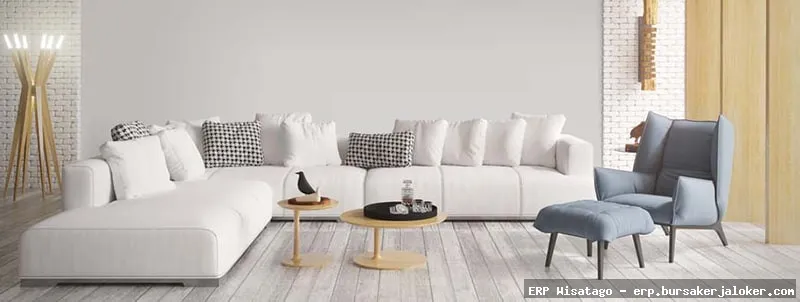The furniture manufacturing industry, with its intricate supply chains, diverse product lines, and fluctuating customer demands, often faces unique operational challenges. Imagine juggling raw material sourcing, managing complex bills of materials (BOMs), tracking production schedules, and ensuring timely delivery, all while trying to stay competitive in a market flooded with both mass-produced and custom-designed pieces. Without a robust system in place, these challenges can quickly lead to inefficiencies, delays, and ultimately, lost profits.
That’s where Enterprise Resource Planning (ERP) systems come into play. ERP isn’t just about software; it’s about transforming the way a furniture manufacturer operates. It’s about integrating all aspects of the business – from order entry to shop floor control to financial accounting – into a single, unified platform. This integration provides real-time visibility across the entire organization, enabling better decision-making, improved efficiency, and enhanced customer satisfaction.

This article will serve as your comprehensive guide to ERP for furniture manufacturing. We’ll delve into the specific features and benefits of ERP systems tailored for this industry, explore common challenges during implementation, and offer practical advice on how to choose the right ERP solution for your unique business needs. Think of this as a roadmap to navigating the complex landscape of ERP and unlocking the potential for growth and profitability within your furniture manufacturing operation.
Understanding the Specific Needs of Furniture Manufacturing ERP
Furniture manufacturing isn’t like producing widgets. It has nuances that generic ERP systems often overlook. The industry demands specific functionalities to address its unique complexities. Let’s explore some of these critical needs.
Bill of Materials (BOM) Management
Furniture often comprises numerous components, from wood and fabric to hardware and finishing materials. A robust BOM management module is crucial for accurately defining and managing these complex assemblies. The ERP system should allow for multi-level BOMs, supporting sub-assemblies and variations based on customization options. Effective BOM management reduces errors in material planning, improves costing accuracy, and streamlines production processes.
Inventory Management
Maintaining optimal inventory levels is a delicate balancing act. Too much inventory ties up capital, while too little can lead to production delays and lost sales. Furniture ERP needs to handle raw materials, work-in-progress (WIP), and finished goods inventory effectively. Features like barcode scanning, cycle counting, and demand forecasting are essential for accurate inventory tracking and efficient stock control. I remember one client struggling with mismatched inventory counts due to manual tracking. Implementing an ERP with real-time inventory updates significantly reduced discrepancies and improved order fulfillment rates. A comprehensive approach to IT management often involves RMM to proactively monitor and maintain systems
.
Production Planning and Scheduling
Efficient production planning and scheduling are vital for meeting customer deadlines and maximizing resource utilization. The ERP system should provide tools for capacity planning, material requirements planning (MRP), and shop floor control. Visual scheduling tools that allow you to drag-and-drop production orders can be incredibly helpful in optimizing workflows and identifying potential bottlenecks. The ability to simulate different production scenarios also allows for proactive problem-solving.
Order Management and Customization
Many furniture manufacturers offer customization options to cater to individual customer preferences. The ERP system needs to handle custom orders efficiently, allowing for easy configuration of products, accurate pricing based on selected options, and seamless integration with production planning. A good ERP will allow sales teams to generate quotes quickly and accurately, even for complex custom configurations. This responsiveness can be a major competitive advantage.
Quality Control
Maintaining consistent quality is paramount in the furniture industry. The ERP system should support quality control processes throughout the production cycle, from raw material inspection to final product testing. Features like defect tracking, root cause analysis, and corrective action management can help identify and address quality issues proactively. Integrating quality control with production data allows for a comprehensive view of product performance and continuous improvement.
Financial Management
Beyond the manufacturing-specific functionalities, a comprehensive ERP system also integrates financial management processes. This includes general ledger accounting, accounts payable, accounts receivable, and cost accounting. Accurate cost accounting is particularly important for furniture manufacturers, as it allows for precise determination of product costs and profitability. The ability to track costs associated with different materials, labor, and overhead is crucial for informed pricing decisions.
Key Features of Furniture Manufacturing ERP
Now that we understand the specific needs of the industry, let’s explore the key features you should look for in a furniture manufacturing ERP system.
Configuration Management
This feature allows you to easily create and manage product configurations based on customer requirements. It streamlines the order entry process and ensures accurate pricing for customized items.
Material Requirements Planning (MRP)
MRP uses sales forecasts and production schedules to determine the quantity of raw materials and components needed to meet demand. This helps prevent stockouts and minimize inventory costs.
Shop Floor Control
Shop floor control provides real-time visibility into the production process, allowing you to track work orders, monitor machine utilization, and manage labor resources. This feature often includes mobile applications for data collection on the shop floor, eliminating manual data entry and improving accuracy.
Capacity Planning
Capacity planning helps you determine whether you have sufficient resources (equipment, labor) to meet production demands. It allows you to identify potential bottlenecks and make adjustments to optimize resource allocation.
Product Lifecycle Management (PLM) Integration
Integrating your ERP with a PLM system allows you to manage product data from design to manufacturing. This ensures that everyone in the organization is working with the most up-to-date information.

Customer Relationship Management (CRM) Integration
Integrating your ERP with a CRM system provides a 360-degree view of your customers, allowing you to improve customer service and personalize marketing efforts. This integration allows sales teams to access real-time inventory information and order status, improving communication and customer satisfaction.
Business Intelligence and Reporting
A robust ERP system should provide comprehensive reporting and analytics capabilities, allowing you to track key performance indicators (KPIs), identify trends, and make data-driven decisions. Customizable dashboards are essential for providing real-time insights into critical business areas.
Challenges During ERP Implementation in Furniture Manufacturing
Implementing an ERP system is a complex undertaking, and furniture manufacturers often face specific challenges during the process. Being aware of these challenges and planning for them can significantly increase the chances of a successful implementation.
Data Migration
Migrating data from legacy systems to the new ERP system can be a time-consuming and error-prone process. It’s crucial to cleanse and validate the data before migration to ensure accuracy. I’ve seen projects delayed significantly due to poor data quality. Investing in data cleansing tools and allocating sufficient time for data migration are essential.
Change Management
Implementing an ERP system often requires significant changes to business processes. Resistance to change from employees can be a major obstacle. Effective change management strategies, including communication, training, and user involvement, are crucial for overcoming resistance and ensuring user adoption. Explain the “why” behind the changes and involve employees in the implementation process to foster buy-in.
Customization vs. Standardization
While some customization may be necessary to meet specific business needs, excessive customization can lead to increased costs and complexity. Strive to standardize processes as much as possible and limit customization to only the most critical areas. Consider using configurable options within the ERP system instead of custom coding whenever possible.
Integration with Existing Systems
Integrating the ERP system with other existing systems, such as CAD/CAM software or e-commerce platforms, can be challenging. Ensure that the ERP system supports integration with your existing systems and that you have the necessary expertise to manage the integration process. APIs (Application Programming Interfaces) are crucial for seamless integration between different systems.
User Training
Proper user training is essential for ensuring that employees can effectively use the ERP system. Provide comprehensive training to all users, covering all relevant modules and functionalities. Consider offering ongoing training and support to address user questions and issues. Train-the-trainer programs can be effective for disseminating knowledge throughout the organization.
Choosing the Right ERP Solution for Your Furniture Manufacturing Business
Selecting the right ERP solution is a critical decision that can significantly impact the success of your implementation. Here are some key factors to consider:
Industry-Specific Functionality
Choose an ERP system that is specifically designed for the furniture manufacturing industry and includes the features and functionalities you need to address your unique challenges.
Scalability
Select an ERP system that can scale with your business as you grow. The system should be able to handle increasing transaction volumes and accommodate new users and locations.
Cloud vs. On-Premise Deployment
Consider whether you prefer a cloud-based or on-premise deployment. Cloud-based ERP systems offer advantages in terms of cost, scalability, and maintenance, while on-premise systems provide greater control over data and infrastructure.
Vendor Reputation and Support
Choose a reputable ERP vendor with a proven track record of successful implementations and excellent customer support. Check references and read reviews to assess the vendor’s reputation. A strong vendor partnership is crucial for long-term success.
Total Cost of Ownership (TCO)
Evaluate the total cost of ownership, including software licenses, implementation services, training, and ongoing maintenance and support. Don’t just focus on the initial purchase price; consider the long-term costs associated with the system.

User-Friendliness
Select an ERP system that is user-friendly and easy to learn. A user-friendly interface can improve user adoption and reduce training costs. Request a demo of the system and involve key users in the evaluation process.
Ultimately, choosing the right ERP system for your furniture manufacturing business requires careful consideration of your specific needs, challenges, and budget. By following the advice outlined in this article, you can increase your chances of selecting a solution that will help you improve efficiency, reduce costs, and achieve your business goals.
Frequently Asked Questions (FAQ) about ERP for furniture manufacturing
What are the key benefits of implementing an ERP system specifically for furniture manufacturing companies?
Implementing an ERP (Enterprise Resource Planning) system tailored for furniture manufacturing offers numerous advantages. Firstly, it streamlines operations by integrating various departments like sales, production, inventory, and finance into a single, unified platform. This allows for improved visibility across the entire supply chain, enabling better demand forecasting and reduced lead times. Secondly, ERP systems optimize production planning, reducing material waste and improving efficiency. Features like Bill of Materials (BOM) management and production scheduling are crucial. Thirdly, it enhances inventory control, minimizing stockouts and overstocking, which directly impacts profitability. Finally, ERP systems provide real-time data and analytics, empowering informed decision-making and driving business growth. Ultimately, an ERP solution helps furniture manufacturers improve efficiency, reduce costs, and enhance customer satisfaction.
How can an ERP system help furniture manufacturers manage complex Bills of Materials (BOMs) and product configurations?
Furniture manufacturing often involves intricate Bills of Materials (BOMs) with various components, finishes, and customization options. An ERP system simplifies BOM management by providing a centralized repository for all product-related information. This allows manufacturers to easily track components, costs, and dependencies. Advanced configuration features within the ERP enable customers to customize furniture designs, which are then automatically translated into accurate BOMs and production orders. The system can also handle variant configurations based on size, color, material, and other attributes. Furthermore, ERP facilitates version control of BOMs, ensuring that the correct materials are used for each production run, minimizing errors and improving product quality. Integration with CAD systems also improves BOM accuracy and reduces manual data entry.
What are the key features to look for in an ERP system for furniture manufacturing, focusing on production scheduling and inventory management?
When selecting an ERP system for furniture manufacturing, prioritize features that address the unique challenges of production scheduling and inventory management. For production scheduling, look for capabilities like finite capacity scheduling, which considers resource constraints when creating production plans. Real-time shop floor control allows tracking of work orders and monitoring progress. For inventory management, demand forecasting tools are essential for predicting material requirements. Look for support for various inventory valuation methods (FIFO, LIFO, weighted average). Serial number and lot tracking are crucial for traceability and quality control. Moreover, the ERP should offer robust reporting and analytics to identify bottlenecks, optimize inventory levels, and improve overall production efficiency. A strong integration between production scheduling and inventory management is vital for a seamless workflow.
